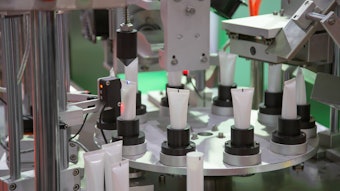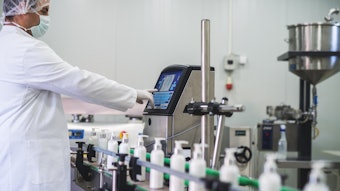
Read the full article in the April 2022 digital edition. . .
Delivery systems and excipients have been developed to address formulation issues most bioactive molecules face—e.g., aqueous solubility, stability, bioavailability and biocompatibility. The currently available microemulsions, nanosuspensions, liposomes, polymeric micelles, nanoparticles, cyclodextrins, etc., all have advantages but also disadvantages. There is thus a market need for an excipient that solves multiple formulation issues.
Dendritic polymers are a class of well-defined, three-dimensional polymers; poly(amidoamine) (PAMAM) dendrimers were first synthesized by Tomalia, et al., in 1985.1 They have attracted interest due to their unique container properties and polyvalency at the nano scale. These features have enhanced the aqueous solubility, stability, permeability, bioavailability and targeting of a wide range of bioactive molecules. They are proposed in this article for cosmetic applications to address the aforementioned formulation issues.
Over the past two decades, researchers, including the present authors, have synthesized and commercialized various dendrimers2-7 and explored their potential for applications in the pharmacological,8-12 in vitro diagnostic,13-16 agricultural17, 18 and cosmetic industries.19-21 Biocompatible and sustainable dendritic polymers—based on the same chemistry as (PAMAM) dendrimers but addressing their known in vivo issues—were recently designed by Tomalia, et al., for cosmeticsa.22, 23
The potential of these dendrimers is explored here using trans-resveratrol (RSV), whose antioxidant and anti-aging benefits are well-known—as are its formulation difficulties; these are described later. RSV-loaded dendrimers were tested for their ability to enhance the aqueous solubility, stability, dissolution and topical permeation of RSV. Topical permeation in vitro and ex vivo, bioavailability, pharmacokinetic behaviors, and compatibility of the dendrimers in formulations also were assessed.
To better understand their characteristics and release mechanisms, however, it is first helpful to understand the structure and function of dendrimers, including approaches to entrap or attach guest molecules, and delivery mechanisms compared with other systems. Biocompatibility and biodegradability also are important considerations.
Structure and Function
The structure of dendrimers consists of a primary core that branches outward with the addition of layer after layer, generation after generation around the central core and terminates in polyvalent surface groups. These dendrimer platforms can be classified based on the core molecule, number of generations used and the availability of various surface functionalities. Both hydrophobic and hydrophilic bioactive guest molecules can be entrapped, solubilized and delivered by dendrimers.
. . .Read more in the April 2022 digital edition. . .
References
- Tomalia, D.A., Baker, H. ... Smith, P., et al. (1985). A new class of polymers: Starburst-dendritic macromolecules.Polymer 17(1) 117-132.
- Chauhan, A.. et al. (2005). Dendritic polymers with enhanced amplification and interior functionality. PCT/US2005/047635
- Chauhan, A., et al. (2011). Dendritic polymers with enhanced amplification and interior functionality. US7985424B2.
- Chauhan, A.S. and Svenson, S. (2007). Formulations containing hybrid dendrimers. PCT/US2007/014402.
- Svenson, S. and Chauhan, A.S. (2008). PEHAM dendrimers as excipients. WO/2008/030591.
- Svenson, S. and Chauhan, A.S. (2009). PEHAM dendrimers as excipients. US20090324742A1.
- Chauhan, A., et al. (2013). Dendritic polymer with enhanced extension and interior functionality. JP2013231034A.
- Chauhan, A.S., Chalasani, K.B., ... Ragahvan, K.V. (2006). Therapeutic/edible formulations comprising herbal ingredients and method for treating hyperglycemia. US6989160B2.
- Chauhan, A.S., Diwan P.V., Jain N.K. and Ragahvan, K.V. (2003). Compositions and complexes containing a macromolecular polymer as potential anti-inflammatory agents. US20030180250A1.
- Chauhan, A.S., Diwan P.V., Jain N.K. and Ragahvan, K.V. (2007). Compositions and complexes containing a macromolecular polymer as potential anti-inflammatory agents. USPTO 20070014757A1.
- Chauhan, A.S., Diwan P.V., Jain N.K., and Ragahvan, K.V. (2003). Macromolecular compounds as potential anti-inflammatory agents. WO2003080121A1.
- Chauhan, A.S., Diwan P.V., Jain N.K. and Ragahvan, K.V. (2002). Macromolecular compounds as potential anti-inflammatory agents. AU 2002249486.
- Singh P., Moll, F. III., ... Saul, R., et al. (1999). Rapid detection of analytes with receptors immobilized on soluble submicron particles. US/5898005.
- Tomalia, D.A. and Dewald, J.R. (1995). Dense star polymers having core, core branches, terminal groups. US 4507466.
- Tomalia, D.A. and Dewald, J.R. (1999). Dense star polymers and dendrimers. US 4568737.
- Tomalia, D.A. and Kirchhoff, P.M. (2005). Rod-shaped dendrimers. US 4694064.
- Hayes, R.T., Owen, J.D., Chauhan, A.S. and Pulgam, V.R. (2010). PEHAM dendrimers for use in agriculture. PCT/US2010/054164.
- Hayes, R.T., Owen, J.D., Chauhan, A.S., Pulgam, V.R. (2017). PEHAM dendrimers for use in agriculture. US9585387B1.
- Chauhan, A.S., Newenhouse, E.A. and Gerhardt, A.H. (2018). Dendrimer nanostructure-based resveratrol formulations. US-9855223B.
- Chauhan, A.S., Newenhouse, E.A. and Gerhardt, A.H. (2019). Compositions comprising a dendrimer-resveratrol complex and methods for making and using the same.US10406119.
- Chauhan, A.S., Newenhouse, E.A. and Gerhardt, A.H. (2021). Compositions comprising a dendrimer-resveratrol complex and methods for making and using the same.US11110068.
- Tomalia, D.A., Hedstrand, D.M. and Nixon, L.S. (2016). Pyrrolidone derivatives, oligomers and polymers. WO 2016/040962 A1.











